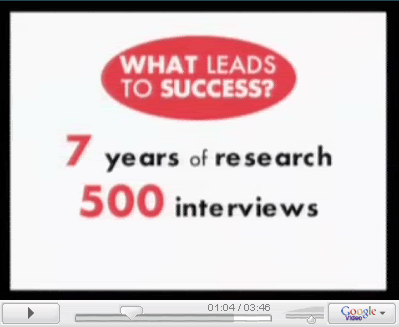Dear Friends,
For the past few weeks I have been discussing with you DiSC Personality Profiling. Today I will wrap up the topic with a brief review and history.
Here is what we have covered so far:
Personality Profiling: Plugging into What Others Want!
High D: The Driving Force
High I: The Influencer
High S : The Loyal Supporter
High C: The Compliant Engineer
You like me know that personality profiling should be a major component of what you do on a daily basis in your business practices. Personality Profiling reaches deep into the area of sales and understanding your clients better, as well as how you relate to the members of your team.
Marston published Emotions of Normal People in 1928. In this book he first formally presented his findings, though he had written about DISC four years earlier. Marston published a second book on DISC, Integrative Psychology, in 1931. Marston really wanted to develop a unit of measurement of 'mental energy'. He did not develop the DISC test or assessment. In fact, he never used it as an assessment at all. However, in 1930, a friend did use it as an assessment in a book on success and it was published as one of the first in the newly emerging field of Self-Help publications.
The tests classify four aspects of behavior by testing a person's preferences in word associations DISC is an acronym for:
Dominance - relating to control, power and assertiveness
Influence - relating to social situations and communication
Steadiness (submission in Marston's time)- relating to patience, persistence, and thoughtfulness
Conscientiousness (or caution, compliance in Marston's time) - relating to structure and organization.
- Dominance: People who score high in the intensity of the 'D' styles factor are very active in dealing with problems and challenges, while low D scores are people who want to do more research before committing to a decision. High "D" people are described as demanding, forceful, egocentric, strong willed, driving, determined, ambitious, aggressive, and pioneering. Low D scores describe those who are conservative, low keyed, cooperative, calculating, undemanding, cautious, mild, agreeable, modest and peaceful.
- Influence: People with High I scores influence others through talking and activity and tend to be emotional. They are described as convincing, magnetic, political, enthusiastic, persuasive, warm, demonstrative, trusting, and optimistic. Those with Low I scores influence more by data and facts, and not with feelings. They are described as reflective, factual, calculating, skeptical, logical, suspicious, matter of fact, pessimistic, and critical.
- Steadiness:(Submission in Marston's time): People with High S styles scores want a steady pace, security, and don't like sudden change. Low S intensity scores are those who like change and variety. High S persons are calm, relaxed, patient, possessive, predictable, deliberate, stable, consistent, and tend to be unemotional and poker faced. People with Low S scores are described as restless, demonstrative, impatient, eager, or even impulsive.
- Conscientious: (Compliance in Marston's time): Persons with High C styles adhere to rules, regulations, and structure. They like to do quality work and do it right the first time. High C people are careful, cautious, exacting, neat, systematic, diplomatic, accurate, tactful. Those with Low C scores challenge the rules and want independence and are described as self-willed, stubborn, opinionated, unsystematic, arbitrary, and careless with details.
A common general public misconception is that if one is described as having either a D, I, S, or C style that all people are simply categorized into one of four types. The 1970's work by Dr John Geier brought DISC into practical application with substantive research. The Geier research delineated the distinct differences of persons within the 4 factor styles with the advent of the Classical Pattern definitions. It was found that there are distinct differences between persons within each of the 4 style profiles. For example not all D's behave in the same way. The same is accurate for the other styles of behavior.
I hope you will find the value in DiSC Profiling, and now begin understand how it will help you daily.
If you would like more information on DiSC Profiling and how to use it in real estate or your daily life, now please email jstanton@jeffreysjournal.com.... Remember I'm On Your Team.
Thanks for spending 3 minutes with me...
The best is yet to be!
Your Trusted Advisor For Life
You read Jeffrey's Journal every week because you, like me want the best for yourself.And you, like me want to build a strong referral based business.Who else like you, like me loves referrals that you can share this blog with right now?


































No comments:
Post a Comment